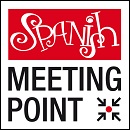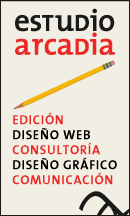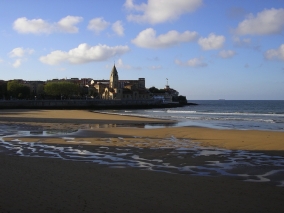Spanish schools and accommodation to study Spanish in Spain
Recent posts
Last schools
introduced
introduced
0 Accommodation

1 Spanish schools

Learning Spanish in Gijon. The tourist guide to study your Spanish course.
General Information. 278,000 inhabitants. 470 kilometres north of Madrid. It belongs to the Autonomous Community of Asturias. Known as the capital of the Green Coast (Costa Verde), Gijon occupies a central position on the Cantabrian Coast, in a bay divided by the Cimadevilla peninsula, which constitutes the old quarter. It is a coastal city with large beaches, seafront promenades and a well-preserved historic centre. The main university, Universidad Laboral, is home to the Laboral Centro de Arte y Creación Industrial, an interdisciplinary art, research and exhibition centre. The University of Oviedo's Faculty of Commerce, Tourism and Social Sciences is also located in the city. Gijon is a very attractive place to study Spanish with many language schools offering a wide range of courses.
Surrounding Areas. Oviedo, the capital of Asturias (27 kilometres). Avilés (25 kilometres). Mieres and the Parque Nacional Picos de Europa, a National Park in the Picos de Europa mountain range (40 kilometres). Both to the east and west of Gijon there are numerous coastal towns and villages worth visiting. There are also various caves containing examples of Paleolithic art which have been declared World Heritage Sites; these can be found in Cabrales, Candamo, Peñamellera, Ribadedeva and Ribadesella.
Main Sights. Palacio de Revillagigedo (1721), a former palace which currently houses the Cajastur cultural centre. The Collegiate Church of St. John the Baptist (Colegiata de San Juan Bautista) and the chapels of La Soledad and Los Remedios. Casa Natal de Jovellanos, a typically Asturian palace of the 15th century and now the home of the Gijon Museum. At the highest point of the Cimadevilla, Eduardo Chillida's abstract sculpture Elogio del Horizonte ("Praise to the Horizon") overlooks the Cantabrian Sea. The Roman Villa of Veranes. Parque Arqueológico Natural de Campa Torres, an archaeological site with remains of a pre-Roman and, subsequently, Roman settlement. The Atlantic Botanical Garden of Gijon (Jardín Botánico Atlántico de Gijón). El Acuario de Gijon, an aquarium situated next to Playa de Poniente, one of the city's urban beaches.
Culture. The internationally renowned Gijon Film Festival (Festival de Cine de Gijón), which takes place at the end of November. ‘Noir Week' (Semana Negra), a 10-day event starting on the second Friday of July which combines debates and lectures on crime fiction with book launches, outdoor concerts and other activities. The Jazz Festival (November). Salón del Cómic (beginning of October), an event devoted to the world of comic books. Gijon's most interesting museums include the Jovellanos Museum, the Bagpipe Museum (Museo de la Gaita), the Asturias Railway Museum (Museo del Ferrocarril de Asturias) and the Museum of the Asturian People (Museu del Pueblu D'Asturies). The most representative theatre and performance venue is Teatro de Jovellanos.
Beaches. Gijon has two types of beaches: urban and rural. The biggest and most important is the centrally located San Lorenzo, which can be enjoyed all year round thanks to a promenade that stretches over nearly three kilometres. Playa de Poniente, Playa de los Mayanes, Playa del Arbeyal and Playa del Cervigón also belong to the urban category, while Playa de Estaño, Playa de la Ñora and the nudist-friendly Playa de Peñarrubia and Playa de Serín are among the best rural beaches. The beaches are a major attraction for the many students who decide to study Spanish in Gijon.
Shopping. The main shopping streets are all in the city centre: Calle San Bernardo, Calle Los Moros, Calle Corrida, Calle Covadonga, Calle Menéndez Valdés, Calle Magnus Blikstad, Calle Langreo, Calle Asturias and Calle Álvarez Baraya. Another alternative is the La Calzada neighbourhood. Among the shopping centres you can visit are San Agustín, Los Fresnos and La Calzada.
Gastronomy. There are good bars and restaurants all over Gijon, but perhaps the best selection can be found in the centrally located El Carmen neighbourhood. The famous taverns or cider bars (chigres) are particularly recommended for tapas or a sit-down lunch; in these traditional establishments the cider is poured from overhead into a glass held at waist height so as to stimulate the bubbles immediately before serving. The local cuisine is predominantly fish-based: sardines, anchovies (bocartes), black bream (chopas)... and angler fish (pixin) or hake, which are usually either grilled or stewed in cider; and not forgetting the simple but delicious sea urchins (oricios). However, the most typical dish in the region is the hearty fabada asturiana (a slow-cooked bean stew with ham, salt pork and chorizo). Arroz con leche (rice pudding) is one of the most popular desserts, while frixuelos (pancakes) and casadielles (cakes made with wheat flour and filled with walnuts or hazelnuts) are traditionally eaten during the Carnival period leading up to Lent.
Sports. You can play or learn almost any sport here. Gijon not only boasts a wide range of sporting facilities, but also has much to offer in the way of outdoor pursuits such as hunting (with three game preserves to choose from: Abadía de Cenero, Siero-Noreña and Sariego-Villaviciosa) and fishing (both recreational and underwater), not to mention a marina with 780 berths. In addition, there are various swimming pools, sports halls, gymnasiums, indoor tracks and football pitches. The city's first division football team, Real Sporting de Gijon, play their home matches at El Molinón stadium. Gijon also has three golf courses, two municipal and one private.
Fiestas. The second week of August is the ‘Big Week' (Semana Grande), with bullfights and free concerts every day. Antroxu is the Asturian name for the Carnival period which is celebrated nationwide, a time for fun, food and fancy dress. Other important events are the Natural Cider Festival (Fiesta de la Sidra Natural), which takes place on the last weekend of August, and the Fiestas de San Juan y San Pedro (end of June), which link the celebrations in honour of St. John and St. Peter with concerts, open-air dances and bonfires on the beach.
Transport. A sightseeing bus takes tourists round the whole city during Holy Week and the summer months. It is easy to get from Gijon to other Spanish cities by train or by using the various coach services.
Nightlife. Students who decide to study Spanish in Gijon will discover a very active nightlife. The busiest areas are the old quarter (Cimadevilla) and, further along the seashore, El Fomento, where most of the disco bars specialize in commercial dance music. Other good options for a night out are: Capua-Náutico, La Arena, La Calzada, Gijon Sur, El Llano, and an area known as the ‘Wine Route' (La Ruta de los Vinos). Special mention should also be made of a unique initiative called Abierto hasta el Amanecer ("Open until Dawn"); the idea is to make use of public facilities at times when they would normally be closed by organizing various sporting and cultural activities aimed at young people looking for alternative night-time leisure options.
Surrounding Areas. Oviedo, the capital of Asturias (27 kilometres). Avilés (25 kilometres). Mieres and the Parque Nacional Picos de Europa, a National Park in the Picos de Europa mountain range (40 kilometres). Both to the east and west of Gijon there are numerous coastal towns and villages worth visiting. There are also various caves containing examples of Paleolithic art which have been declared World Heritage Sites; these can be found in Cabrales, Candamo, Peñamellera, Ribadedeva and Ribadesella.
Main Sights. Palacio de Revillagigedo (1721), a former palace which currently houses the Cajastur cultural centre. The Collegiate Church of St. John the Baptist (Colegiata de San Juan Bautista) and the chapels of La Soledad and Los Remedios. Casa Natal de Jovellanos, a typically Asturian palace of the 15th century and now the home of the Gijon Museum. At the highest point of the Cimadevilla, Eduardo Chillida's abstract sculpture Elogio del Horizonte ("Praise to the Horizon") overlooks the Cantabrian Sea. The Roman Villa of Veranes. Parque Arqueológico Natural de Campa Torres, an archaeological site with remains of a pre-Roman and, subsequently, Roman settlement. The Atlantic Botanical Garden of Gijon (Jardín Botánico Atlántico de Gijón). El Acuario de Gijon, an aquarium situated next to Playa de Poniente, one of the city's urban beaches.
Culture. The internationally renowned Gijon Film Festival (Festival de Cine de Gijón), which takes place at the end of November. ‘Noir Week' (Semana Negra), a 10-day event starting on the second Friday of July which combines debates and lectures on crime fiction with book launches, outdoor concerts and other activities. The Jazz Festival (November). Salón del Cómic (beginning of October), an event devoted to the world of comic books. Gijon's most interesting museums include the Jovellanos Museum, the Bagpipe Museum (Museo de la Gaita), the Asturias Railway Museum (Museo del Ferrocarril de Asturias) and the Museum of the Asturian People (Museu del Pueblu D'Asturies). The most representative theatre and performance venue is Teatro de Jovellanos.
Beaches. Gijon has two types of beaches: urban and rural. The biggest and most important is the centrally located San Lorenzo, which can be enjoyed all year round thanks to a promenade that stretches over nearly three kilometres. Playa de Poniente, Playa de los Mayanes, Playa del Arbeyal and Playa del Cervigón also belong to the urban category, while Playa de Estaño, Playa de la Ñora and the nudist-friendly Playa de Peñarrubia and Playa de Serín are among the best rural beaches. The beaches are a major attraction for the many students who decide to study Spanish in Gijon.
Shopping. The main shopping streets are all in the city centre: Calle San Bernardo, Calle Los Moros, Calle Corrida, Calle Covadonga, Calle Menéndez Valdés, Calle Magnus Blikstad, Calle Langreo, Calle Asturias and Calle Álvarez Baraya. Another alternative is the La Calzada neighbourhood. Among the shopping centres you can visit are San Agustín, Los Fresnos and La Calzada.
Gastronomy. There are good bars and restaurants all over Gijon, but perhaps the best selection can be found in the centrally located El Carmen neighbourhood. The famous taverns or cider bars (chigres) are particularly recommended for tapas or a sit-down lunch; in these traditional establishments the cider is poured from overhead into a glass held at waist height so as to stimulate the bubbles immediately before serving. The local cuisine is predominantly fish-based: sardines, anchovies (bocartes), black bream (chopas)... and angler fish (pixin) or hake, which are usually either grilled or stewed in cider; and not forgetting the simple but delicious sea urchins (oricios). However, the most typical dish in the region is the hearty fabada asturiana (a slow-cooked bean stew with ham, salt pork and chorizo). Arroz con leche (rice pudding) is one of the most popular desserts, while frixuelos (pancakes) and casadielles (cakes made with wheat flour and filled with walnuts or hazelnuts) are traditionally eaten during the Carnival period leading up to Lent.
Sports. You can play or learn almost any sport here. Gijon not only boasts a wide range of sporting facilities, but also has much to offer in the way of outdoor pursuits such as hunting (with three game preserves to choose from: Abadía de Cenero, Siero-Noreña and Sariego-Villaviciosa) and fishing (both recreational and underwater), not to mention a marina with 780 berths. In addition, there are various swimming pools, sports halls, gymnasiums, indoor tracks and football pitches. The city's first division football team, Real Sporting de Gijon, play their home matches at El Molinón stadium. Gijon also has three golf courses, two municipal and one private.
Fiestas. The second week of August is the ‘Big Week' (Semana Grande), with bullfights and free concerts every day. Antroxu is the Asturian name for the Carnival period which is celebrated nationwide, a time for fun, food and fancy dress. Other important events are the Natural Cider Festival (Fiesta de la Sidra Natural), which takes place on the last weekend of August, and the Fiestas de San Juan y San Pedro (end of June), which link the celebrations in honour of St. John and St. Peter with concerts, open-air dances and bonfires on the beach.
Transport. A sightseeing bus takes tourists round the whole city during Holy Week and the summer months. It is easy to get from Gijon to other Spanish cities by train or by using the various coach services.
Nightlife. Students who decide to study Spanish in Gijon will discover a very active nightlife. The busiest areas are the old quarter (Cimadevilla) and, further along the seashore, El Fomento, where most of the disco bars specialize in commercial dance music. Other good options for a night out are: Capua-Náutico, La Arena, La Calzada, Gijon Sur, El Llano, and an area known as the ‘Wine Route' (La Ruta de los Vinos). Special mention should also be made of a unique initiative called Abierto hasta el Amanecer ("Open until Dawn"); the idea is to make use of public facilities at times when they would normally be closed by organizing various sporting and cultural activities aimed at young people looking for alternative night-time leisure options.
© TEXT: SPANISH IN TOUR.
VIDEO: Patronato de Turismo de Gijón
VIDEO: Patronato de Turismo de Gijón























